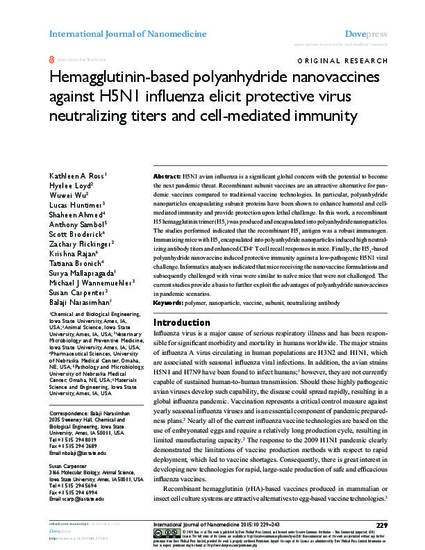
H5N1 avian influenza is a significant global concern with the potential to become the next pandemic threat. Recombinant subunit vaccines are an attractive alternative for pandemic vaccines compared to traditional vaccine technologies. In particular, polyanhydride nanoparticles encapsulating subunit proteins have been shown to enhance humoral and cell-mediated immunity and provide protection upon lethal challenge. In this work, a recombinant H5 hemagglutinin trimer (H53) was produced and encapsulated into polyanhydride nanoparticles. The studies performed indicated that the recombinant H53 antigen was a robust immunogen. Immunizing mice with H53 encapsulated into polyanhydride nanoparticles induced high neutralizing antibody titers and enhanced CD4+ T cell recall responses in mice. Finally, the H53-based polyanhydride nanovaccine induced protective immunity against a low-pathogenic H5N1 viral challenge. Informatics analyses indicated that mice receiving the nanovaccine formulations and subsequently challenged with virus were similar to naïve mice that were not challenged. The current studies provide a basis to further exploit the advantages of polyanhydride nanovaccines in pandemic scenarios.
Available at: http://works.bepress.com/mallapragada_surya_k/26/

This article is from International Journal of Nanomedicine 10 (2015): 229, doi: 10.2147/IJN.S72264. Posted with permission.